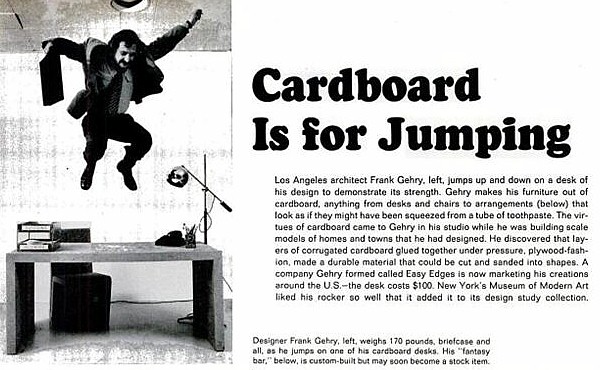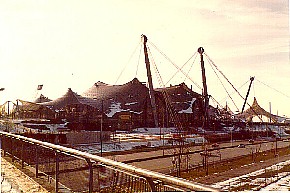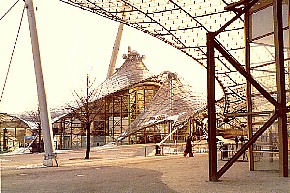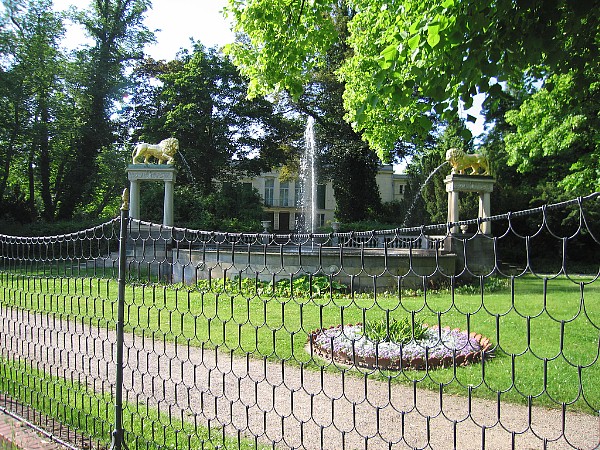2002.10.18 12:25
Re: art and architecture 30 years ago
There are several other art and architecture highlights from Life 1972 yet to be included, such as a review of Venturi's work and a photo review of Gehry's cardboard furniture--love the picture of Gehry mid-air about to stomp down on one of his tables, a real 'museum piece'. Plus there is that Botticelli painting valued at over a million dollars then, but still owned (for many generations) by a family of poor Italian farmers. Something in the back of my mind tells me that this painting was later disclosed as a fraud, like the Tasaday Tribe (also reported in 1972 as extremely ancient/primitive heretofore undiscovered people) turned out to be a fraud.
Perhaps scaffolding, like Life, can often be an interesting play of image and reality.

2002.10.26 11:06
Re: Monkeys and designers
You raise an interesting point. I've never heard of the 100th monkey notion, but I have from time to time wondered about the fact "that designers, that have never seen the work of another, and living across geographic bounds, can create similar art." In the mid-1980s I thought (to myself) that wavelengths, somehow literally and/or figuratively, had to do with an otherwise serendipitous creative/cognitive commonality. The wavelengths (if I try to expand this 'theory') emanate from individuals and these same wavelengths are picked up by other individuals, and in either case heightened sensitivity is involved. Like the 100th monkey notion, as more individuals incorporate a wavelength that is out there, the stronger the wavelength 'signal' becomes. Admittedly, this idea is easily flawed, and I only mention it now as something I used to think (about).
While your question (rightly) centers on creative similarities between disparate artists/designers, a related phenomenon in our time is the effective role of the hired publicist. Recently, I mentioned that Frank Gehry's cardboard furniture was featured in a 1972 issue of Life magazine. I have my own collection of 1972 Life magazines that I received by subscription back then and which I've been taking apart over the years, but I also recently purchased a lot of them via eBay, thus my renewed knowledge of what is in these magazines. I wanted to show the Gehry feature but I didn't bookmark it. So, instead of looking through all the magazines again, I looked up the article in a Gehry bibliography, and I was surprised to find that there were over a dozen 1972 publications that featured an article on Gehry's cardboard furniture. In this case, the 100th monkey is more specifically the 100th magazine editor contacted by a publicist.
| |
2004.06.30 22:55
Modern Trajectory
Perhaps it's the line from Gordon Matta-Clark to Frank Gehry that should be more recognized.
2004.07.01 14:57
Modern Trajectory
Why not compose a modern trajectory based on individual buildings/designs and events (such as building expositions, publications, schools, symposiums, etc.) entwined with historical events, instead of dealing with architects themselves as a datum?
Is the course on architecture or is it on architects?
A Venturi and Rauch building of the 1960s, for example, is not the same as a Venturi, Scott Brown & Associates building of now-a-days. The same goes for Gehry's career trajectory. An early Mies building is not the same as a late Mies building (although most late Mies buildings are just like each other). Note what building design Kahn was working on while Wright was designing Beth Sholom Synagogue.
A chronological trajectory of buildings/designs will be much more informative than a more or less speculative list of what architect may have succeeded or followed what other architect.
2004.09.07 18:59
History of Blobitecture
For what it's worth, there are now images of Frei Otto's OLYMPIAPARK, München, 1972 at Quondam
It would be interesting to know whether computers and/or CAD were used in any way in the design development or construction documentation of this project. I kind of doubt it, but you never know.
A very real precursor of Gehry's Bilbao nonetheless.
 
1975.12.31
| |
2005.03.15
note
Do a full reenactment trail before and after Kahn's Media convent. Luckily, my thesis comes before Gehry's Winton Guest House. This list is nice and long, including the precedents I presented at thesis.
2005.06.02 17:59
Re: the Edifice Complex
Maybe one aspect of the problem is that "creative context" is not just necessarily geographically based, meaning, an artist's context does not just necessarily mean the location within which the artists creates. Just because Gehry was in contact with other artists at Venice Beach, does that automatically mean that the work of these artists influenced Gehry's architecture? Again, not necessarily.
I do think creative context is at least often enough chronologically based. What else was going on around the world 1962-78? For example, what were the Progressive Architecture Design Awards like during those years?
I know I've seen working drawings of the chain link fence at Venturi & Rauch's Guild House (1960-66). Were these drawings published where other architects could see them back then? The earliest use of chain link fence by Gehry (that I can find) is at Santa Monica Place (1972-74). Interestingly, the big sign of Santa Monica Place evokes the Venturi & Rauch 1000 Oaks Civic Center competition design (1969) which was (at least) published in Learning from Las Vegas (1972). I wonder if any of these architects know that Karl F. Schinkel designed at Schloss Glienicke, Berlin (c. 1830?) what may be the first chain link fence ever.

schockwellenreiter
|